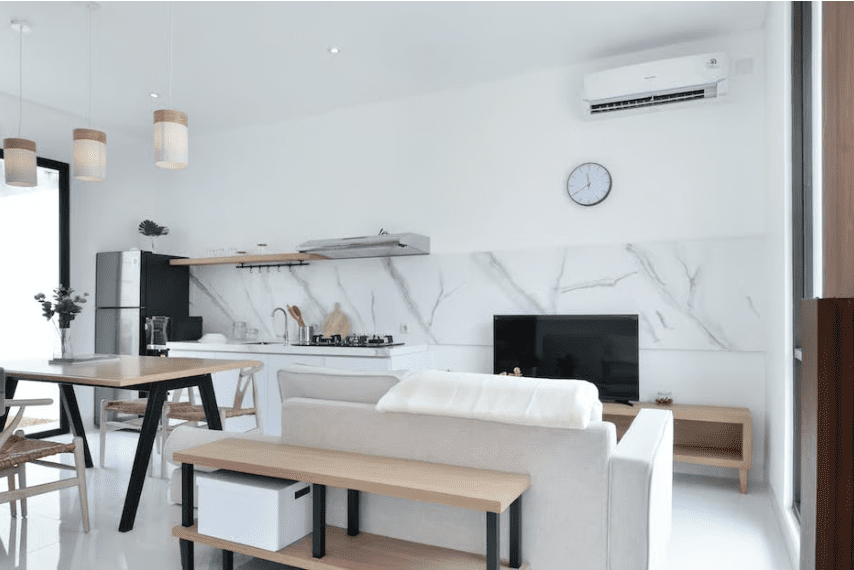Did you know that the cost of running your air conditioning unit can take up over half of your bills? That number only rises depending on how well-insulated your home is, how often you run the AC, and if your unit is operating at peak efficiency.
However, you may notice that your energy bill is increasing but not your overall usage. Or maybe your unit isn’t running as much as it should, even though you haven’t changed your settings.
Here’s how to troubleshoot the parts of an air conditioner to figure out what’s wrong.
Understand the Parts of an Air Conditioner
One of the first steps before diagnosing your problem is to understand all the different parts of your unit. For example, a wall AC unit doesn’t have all the ductwork or drainage that a central unit would. As such, they’re much easier to diagnose and repair.
When dealing with the more complicated central AC, you have things to consider, such as air vents, condenser coils, and external and internal units.
It may be that your air runs but it isn’t cool, in which case the coils may be the problem. If your AC refuses to turn on, it could be anything from a malfunctioning thermostat to a wiring issue.
Check Your Thermostat
One of the most common issues you may run into with your cooling system is that it doesn’t seem to run when you want it to. You’ve set your thermostat to a certain temperature, but it feels cooler or warmer inside than it should.
It’s possible that where you’ve placed your thermostat isn’t a good area for it. If your thermostat receives too much direct sunlight, it’ll read your home as warmer than it actually is. A thermostat in an area that is too dark and cool will think the opposite.
Either problem can result in higher utility bills and fluctuations in your home’s temperature. You need to pay attention to your thermostat settings if you want to avoid high AC costs.
Replace Your Air Filter
A dirty air filter can severely impact how well your AC works as well as your indoor air quality. The purpose of an air filter is to catch any airborne particulate such as dust and bacteria before it circulates throughout your home. However, a clogged air filter forces your AC to work harder to pull air through it.
It’s recommended that you change out your air filter every three months to prevent it from getting clogged. This may change depending on various factors such as if you have pets or live in a dry climate.
Examine Outdoor Unit
Next, you can check your HVAC system’s outdoor unit. The inside part of your system absorbs heat, while the outside portion releases that heat to the outside of your house. If the external unit isn’t working, then that means your AC will struggle to properly cool your home.
If you notice that your AC is running but it’s not blowing cool air, it could be that your outside unit has malfunctioned. You’ll want to check if it’s even on, as well as look for any obstructions that could be blocking the fans. Homeowners can also use a hose on a gentle setting to remove dirt from the outside of the unit.
Feel Airflow From Vents for Blockages
Your air vents and ductwork are responsible for delivering cool air throughout your home from your AC unit. If you’ve noticed that your home isn’t cooling as efficiently as it should, then it may be due to a closed or blocked air vent.
A blocked vent can cause damage to your compressor, increased duct leakage, and even water leaking from your AC. If the vent isn’t blocked, then it could be that your ductwork has AC leaking out.
Unfortunately, there isn’t much a homeowner can do on their own regarding problems with their ductwork. You’ll need to call in a professional to repair or replace it.
Look For Associated Problems
You don’t need to analyze your various HVAC parts to figure out that there’s a problem.
For example, a cooling system that runs all day but doesn’t sufficiently cool a house could mean that there’s a hole in your ductwork or a leak elsewhere in your house. Your AC repair specialist should be able to diagnose the issue.
If your AC turns off unexpectedly and won’t turn back on, there could be a coolant leak or too much condensation filling up the drain pan. It may also be that your outside AC pipes are freezing over.
On a similar note, if your air is running fine but it’s not cool, then that points to the outdoor unit as the problem. There’s also the chance that your thermostat is malfunctioning and not telling the system to cool.
Shut Off the Power
Finally, it’s important that you shut off your AC unit if it has developed any problems. Leaving it running may cause more damage to it and your energy bill to go up.
Instead, find the circuit for your AC and turn the switch off. You should also turn the breaker off in your breaker box.
If you have any experience with AC repair, you can then go into your crawl space and take a look. However, it is recommended that you contact an AC repair specialist. Preferably, you’ll reach out to the company or individual that installed your current system.
Call Professional HVAC Repair
Very few homeowners know all the different parts of an air conditioner. As such, it’s dangerous for them to try and do AC repairs on their own. It’s all too easy to cause even more damage to their unit and make it harder to fix.
Instead, call All Seasons Service Network for your air conditioning repair needs. Our team can help install your new unit, maintain it, and even check the quality of your indoor air. Contact us to learn more and set up a visit.


